
WPC Wall Panels vs. Concrete: Lightweight Alternatives for Modern Construction

In the world of construction, every material tells a story—of strength, of adaptability, of how we build spaces that feel both functional and alive. For decades, concrete has been the silent workhorse, the backbone of skyscrapers, bridges, and homes. Its gray, unyielding presence has defined urban landscapes, promising durability that seems to outlast time itself. But as architecture evolves, so do our needs. Today's builders, designers, and homeowners aren't just chasing strength; they're craving flexibility, sustainability, and a touch of warmth that concrete often struggles to deliver. Enter WPC wall panels —a modern contender that's redefining what it means to build "light" without sacrificing substance. In this article, we'll dive into the age-old debate of tradition vs. innovation, pitting concrete against WPC wall panels to see which truly deserves a spot in the future of construction.
Concrete: The Heavyweight Champion with a Legacy
Let's start with the giant in the room: concrete. Mix sand, gravel, water, and cement, and you get a material that's been shaping civilizations since the Roman Empire. Its appeal is simple: pour it, mold it, let it set, and you've got a structure that can withstand earthquakes, fires, and the test of time. For commercial buildings, high-rises, and foundations, concrete is often the default choice. It's cost-effective in bulk, fire-resistant by nature, and its raw, industrial aesthetic has even become a design trend in "industrial chic" spaces.
But concrete's strengths are also its limitations. At its core, it's a heavyweight—literally. A single cubic meter of concrete weighs around 2,400 kg, which means structural support systems, foundations, and even cranes are non-negotiable during installation. This weight doesn't just drive up construction time; it adds layers of complexity to projects, especially in tight urban spaces or renovation work where existing structures can't bear extra load. Then there's the maintenance: over time, concrete cracks, stains, and absorbs moisture, requiring regular sealing, patching, and repainting to keep it looking presentable. And let's not forget sustainability—concrete production is responsible for about 8% of global CO2 emissions, making it a less-than-ideal choice for eco-conscious builders.
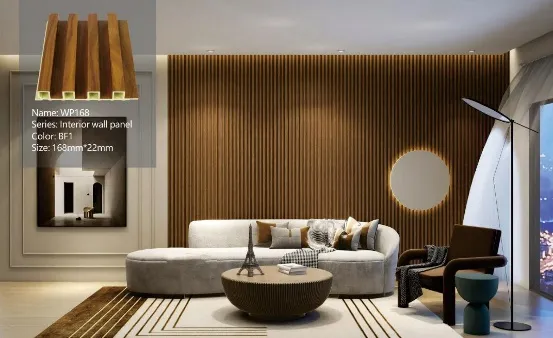
WPC Wall Panels: The Lightweight Innovator Redefining "Building Smart"
If concrete is the rugged veteran, WPC (Wood-Plastic Composite) wall panels are the fresh-faced disruptor. Born from a blend of wood fibers, recycled plastics, and binding agents, WPC panels are engineered to marry the best of both worlds: the warmth of wood and the durability of plastic. But what really sets them apart is their lightweight nature —a game-changer in an industry where every kilogram counts.
Imagine carrying a 1220x2440mm WPC panel with one hand. Sounds impossible? It's not. Most WPC wall panels weigh just 7-10 kg per square meter, a fraction of concrete's heft. This lightness transforms installation from a labor-intensive ordeal into a streamlined process. Instead of needing cranes or teams of workers to hoist heavy slabs, two people can easily maneuver WPC panels into place, cutting installation time by 50% or more. For contractors, this means faster project turnarounds and lower labor costs. For homeowners, it means less disruption during renovations—no jackhammers, no dust clouds, just quick, clean progress.
But WPC's appeal goes beyond weight. These panels are designed for modern life. They're moisture-resistant, making them ideal for bathrooms, kitchens, or basements where concrete might warp or mildew. They're scratch and impact-resistant, standing up to the chaos of busy households or high-traffic commercial spaces like restaurants and offices. And unlike concrete, which offers little in the way of design flexibility, WPC panels come in a kaleidoscope of textures and finishes—wood grain, stone, marble, even abstract patterns. Want a living room wall that mimics reclaimed oak? A hotel lobby with the look of polished stone? A wpc wall panel supplier can deliver exactly that, often with custom color matching and sizing to fit unique project needs.
This versatility is why wpc wall panel solutions are booming across residential and commercial sectors. From boutique cafes using WPC to create cozy, wood-like interiors to office buildings leveraging sleek, minimalist panels for accent walls, these materials are proving that lightweight doesn't mean "cheap" or "temporary." In fact, many WPC panels come with warranties of 10-15 years, a testament to their long-term durability.
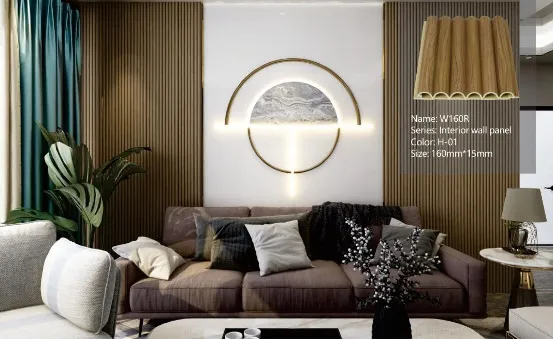
Head-to-Head: WPC Wall Panels vs. Concrete
To truly understand how these materials stack up, let's break down their key attributes side by side. The table below compares WPC wall panels and concrete across critical factors that matter to builders, designers, and homeowners:
| Attribute | WPC Wall Panels | Concrete |
|---|---|---|
| Weight (per sq.m) | 7-10 kg (light enough for manual installation) | 200-300 kg (requires heavy machinery) |
| Installation Time | Fast (modular panels, no curing time; ~100 sq.m/day with 2 workers) | Slow (mixing, pouring, curing; ~20-30 sq.m/day with a team) |
| Durability | Resistant to moisture, rot, and pests; 10-15 year warranty typical | High compressive strength but prone to cracking and staining over time |
| Maintenance | Low (occasional cleaning with soap and water; no sealing/painting) | High (regular sealing, patching cracks, repainting every 3-5 years) |
| Design Flexibility | Extensive (wood grain, stone, marble, and custom colors/textures available) | Limited (smooth, rough, or stamped finishes; hard to alter post-installation) |
| Sustainability | Eco-friendly (uses recycled plastics/wood fibers; low CO2 footprint; recyclable) | High carbon footprint (8% of global CO2 emissions from production) |
| Cost (Material + Labor) | Higher upfront cost ($30-50/sq.m) but lower labor and long-term savings | Lower upfront cost ($15-30/sq.m) but higher labor and maintenance expenses |
| Fire Resistance | Class B or C (varies by product; some treated for higher resistance) | Class A (naturally fire-resistant, does not burn or melt) |
The table tells a clear story: WPC wall panels excel in areas that matter most for modern, efficient construction—speed, adaptability, and long-term value. Concrete, while unmatched in raw strength, struggles with the practical realities of today's building needs, from tight deadlines to eco-friendly goals.
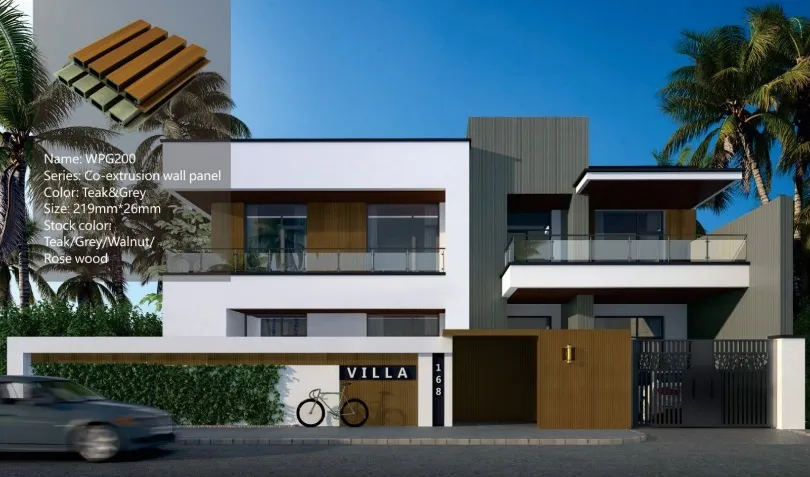
Real-World Impact: Where WPC Wall Panels Shine
Theory is one thing, but real projects bring these materials to life. Let's look at two examples where WPC wall panel solutions transformed spaces—and expectations.
Case Study 1: Urban Co-Working Space Renovation
A mid-sized co-working company in Riyadh wanted to renovate a 2,000 sq.m office space in just 6 weeks. The existing structure, a 1980s building, had weight restrictions that ruled out concrete walls. Enter a local
wpc wall panel supplier
, who proposed a modular system of wood-grain WPC panels. The panels were pre-cut to size, delivered on-site, and installed by a small team of 4 workers. In just 10 days, the entire interior wall system was up—complete with integrated cable management channels and acoustic backing for soundproofing. The result? A bright, modern space with the warmth of wood, delivered under budget and ahead of schedule. "We could never have done this with concrete," said the project manager. "The weight alone would have required reinforcing the floors, adding months to the timeline."
Case Study 2: Coastal Restaurant Exterior Cladding
A beachfront restaurant in Jeddah needed exterior walls that could withstand saltwater, humidity, and intense sunlight—without the heaviness of concrete. A
wpc wall panel supplier
recommended a UV-resistant, moisture-proof WPC panel with a stone-textured finish. The panels were installed over a lightweight metal frame, cutting the structural load by 70% compared to concrete. Three years later, the panels show no signs of warping, fading, or corrosion, and the restaurant's owner notes that maintenance has been minimal: "A quick hose-down every few months is all it takes. With concrete, we would have been repainting every year and worrying about cracks from the salt air."
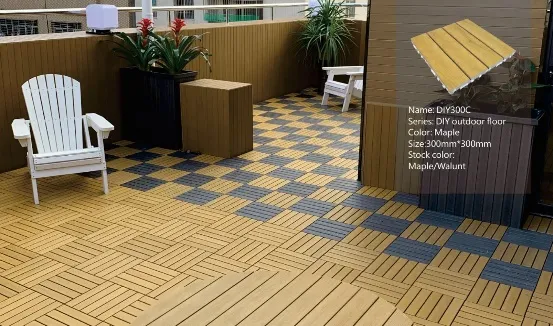
Sustainability: The Green Edge of WPC
In an era where "sustainable construction" is no longer a buzzword but a mandate, WPC wall panels have a clear advantage. Concrete production relies on cement, which releases CO2 during its manufacturing process—a single ton of cement emits roughly 0.9 tons of CO2. WPC, by contrast, often uses recycled plastics (from bottles, packaging) and wood fibers (from sawmill waste), diverting waste from landfills and reducing reliance on virgin materials. Many WPC suppliers also prioritize low-VOC (volatile organic compound) binders, ensuring healthier indoor air quality—a critical factor for schools, hospitals, and homes.
Additionally, WPC's lightweight nature reduces transportation emissions. A truckload of WPC panels can cover 1,000 sq.m, while the same truck could only carry 50-100 sq.m of concrete. Fewer trips mean lower carbon footprints. And at the end of their lifespan, WPC panels can often be recycled into new materials, closing the loop on sustainability. For projects aiming for LEED or other green certifications, WPC wall panels are increasingly becoming a go-to choice.
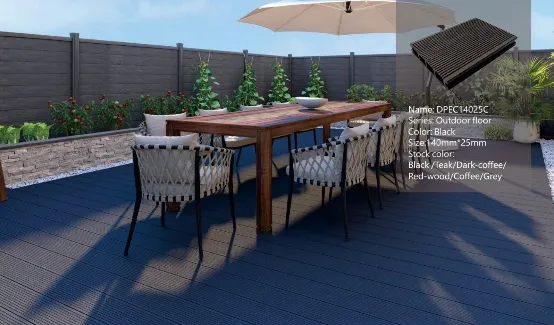
Cost: Short-Term vs. Long-Term Value
It's true: WPC wall panels often have a higher upfront cost than concrete. Material costs for WPC range from $30-50 per square meter, compared to $15-30 for concrete. But this gap narrows—often disappears—when you factor in labor, installation time, and maintenance. For example, installing concrete walls requires mixing, pouring, curing, and finishing, which can add $20-40 per square meter in labor costs. WPC panels, with their click-and-lock or glue-up installation, cut labor costs to $5-15 per square meter. Over a 10-year period, concrete's maintenance costs (sealing, repairs, painting) can add another $50-100 per square meter, while WPC's maintenance costs hover around $5-10. When you crunch the numbers, WPC often ends up being the more cost-effective choice over the long run.
Choosing the Right Material: It's About Balance
Does this mean concrete is obsolete? Hardly. For foundations, load-bearing walls in high-rises, or projects where raw strength is non-negotiable, concrete remains irreplaceable. But for interior walls, accent features, exterior cladding, or renovation projects where weight, speed, and design matter, WPC wall panels are hard to beat. The key is to match the material to the project's unique needs.
If you're a builder or designer considering WPC, start by partnering with a reputable wpc wall panel supplier . Look for suppliers who offer samples, technical support, and custom solutions—whether you need fire-rated panels for a school, acoustic panels for an office, or waterproof panels for a bathroom. A good supplier will work with you to understand your project's goals, budget, and timeline, ensuring you get the right product for the job.
The Future of Building: Light, Smart, and Human-Centric
As construction evolves, the materials we choose will increasingly reflect our values: efficiency, sustainability, and a focus on creating spaces that feel human. Concrete will always have a role, but lightweight alternatives like WPC wall panels are opening new doors—literally and figuratively. They're allowing us to build faster, adapt more easily, and infuse our spaces with warmth and personality, without sacrificing durability.
So the next time you walk into a space with walls that feel both sturdy and inviting, take a closer look. It might just be WPC—proof that the future of construction isn't about being heavy. It's about being smart.
Tags:
Recommend Products










